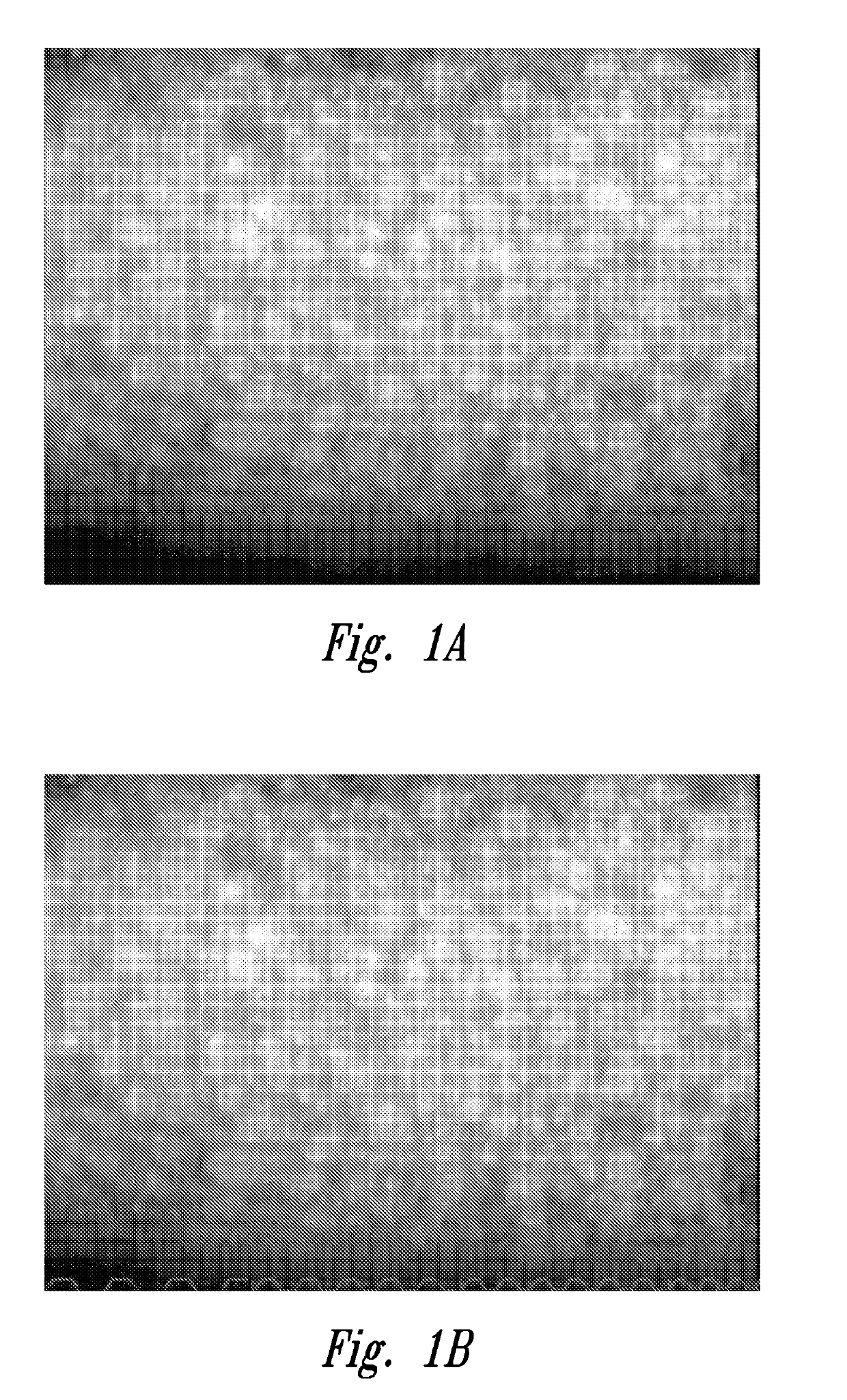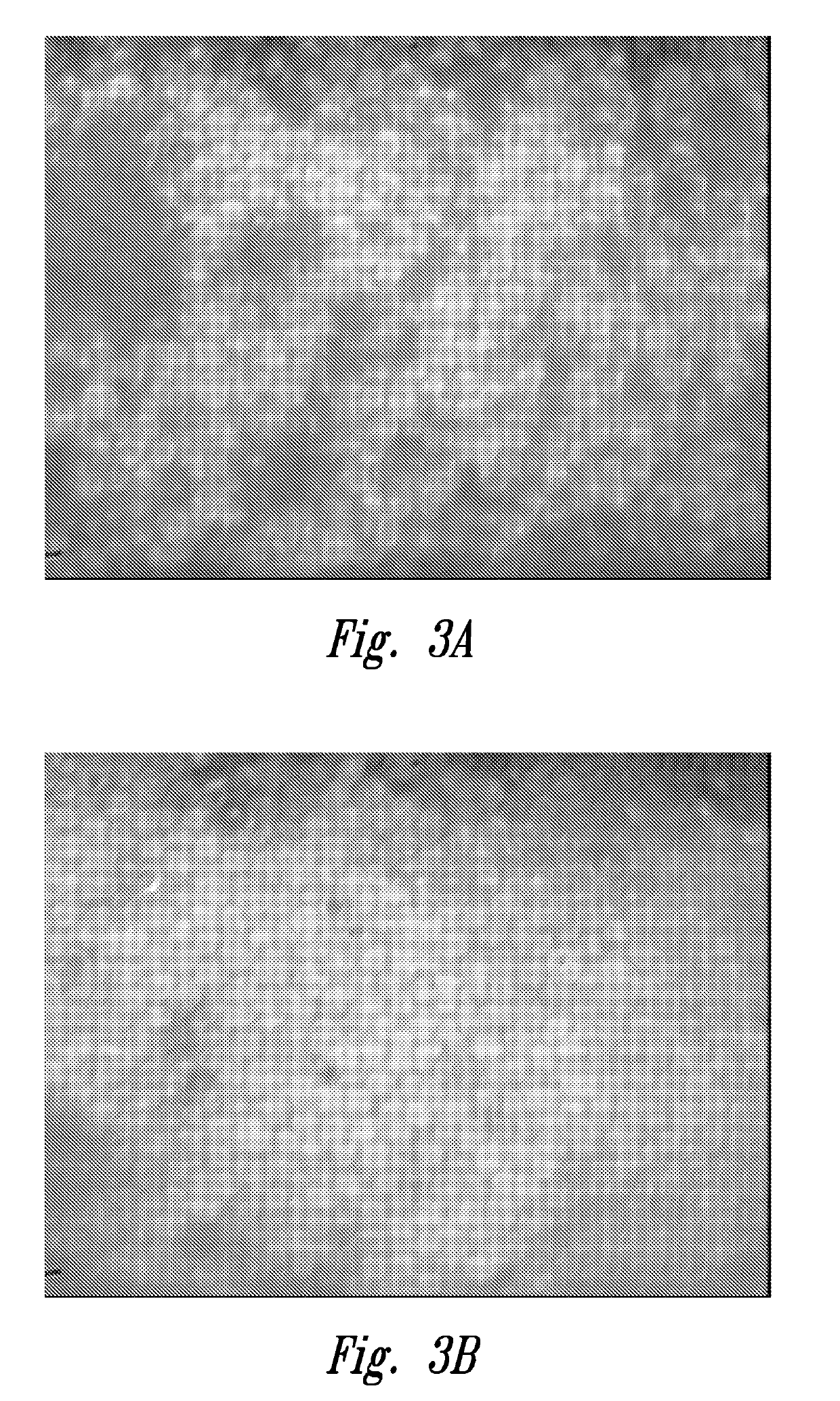Method for assessing corneal tissue quality and endothelial cell density and morphology
a corneal tissue and endothelial cell technology, applied in the field of corneal tissue quality assessment, can solve the problems of difficult analysis, inability to achieve satisfactory specular reflection or cell border definition of the percentage of human donor cornea endothelia, and achieve the effect of improving tissue quality assessment, reducing analysis time, and increasing endothelial cell border definition
- Summary
- Abstract
- Description
- Claims
- Application Information
AI Technical Summary
Benefits of technology
Problems solved by technology
Method used
Image
Examples
example 1
Exemplary Materials
[0051]Corneal Tissue.
[0052]Human donor corneal-scleral rims were used.
[0053]Hypothermic Storage Media.
[0054]Optisol™ GS was used for the present working examples experiments. Other exemplary media that Applicant's incubation technique encompasses are, e.g., Life4C.™, McCarey-Kaufman™ Media, EUSOL-C™, Dexsol™, K-Sol®, CSM™, Chen Medium™, Cornisol™, Steinhardt Media™, Likorol™, etc.
[0055]Corneal Preservation Chamber.
[0056]Exemplary corneal preservation chambers include, but are not limited to, for example, Krolman Viewing Chamber (as used in the present working examples), Bausch&Lomb Viewing Chamber, Numedis Transend Chamber, Alcon Viewing Chamber. Preservation in the original media chamber is also an option.
[0057]Specular Microscope.
[0058]HAI CAS EB-3000xyz (used for our experiments), Konan EB-10, or other suitable specular microscope.
[0059]Incubator.
[0060]Thermo-Scientific Heratherm Compact Incubator, or other suitable incubator
[0061]Slit-Lamp Microscope.
[0062]A T...
example 2
Exemplary Re-Evaluation, and Initial Evaluation Methods were Successfully Applied
[0063]EyeBank Specular Microscopy.
[0064]An overview of EyeBank Specular Microscopy is available on-line at “slideshare.net / EBAICME / eye-bank-specular-microscopy”.
[0065]Both re-evaluation and initial evaluation were performed as follows:
[0066]A—Re-Evaluation by Incubation at 34° C. in Optisol™ GS after an Initial Evaluation at Room Temperature:
[0067]According to particular aspects of the present invention, after an initial evaluation at room temperature, the endothelial cell response of the initially evaluated corneas was re-evaluated by incubating poor endo, moderate dropout & poor photo quality corneas at 34° C. in Optisol™ GS as follows:[0068]a. An initial evaluation using specular microscopy and slit-lamp microscopy is performed at room temperature as soon as possible after recovery of donor corneal-scleral rims. If it is determined that the donor cornea endothelium does not meet the minimum requireme...
example 3
Re-Evaluation of Corneas at 34° C. Resulted in Identifying Corneas as Transplantable, Whereas the Same Corneas were Deemed not Suitable for Transplant (NSFT) Because of Poor Image Quality (Poor Endothelial Density) Upon Initial Evaluation of the Same Cornea at Room Temperature as in the Prior Art
[0081]As described above under “Background”, obtaining an accurate endothelial cell density (ECD) is a particularly important factor for quality assessment of harvested corneal tissue.
[0082]This example shows that at least a portion of poor image quality, poor endo (or dropout grade as shown in working Example 4 below) donor cornea endothelia, as initially judged at room temperature, achieved a state of better cell reflection and better cell border definition when evaluated at the cornea's natural functional temperature (e.g., 34° C.). While some corneas appeared to have endothelial dysfunction at room temperature, a portion of these exhibited evidence of cell viability equivalent to or bett...
PUM
| Property | Measurement | Unit |
|---|---|---|
| temperature | aaaaa | aaaaa |
| temperatures | aaaaa | aaaaa |
| temperatures | aaaaa | aaaaa |
Abstract
Description
Claims
Application Information
 Login to View More
Login to View More - R&D
- Intellectual Property
- Life Sciences
- Materials
- Tech Scout
- Unparalleled Data Quality
- Higher Quality Content
- 60% Fewer Hallucinations
Browse by: Latest US Patents, China's latest patents, Technical Efficacy Thesaurus, Application Domain, Technology Topic, Popular Technical Reports.
© 2025 PatSnap. All rights reserved.Legal|Privacy policy|Modern Slavery Act Transparency Statement|Sitemap|About US| Contact US: help@patsnap.com



